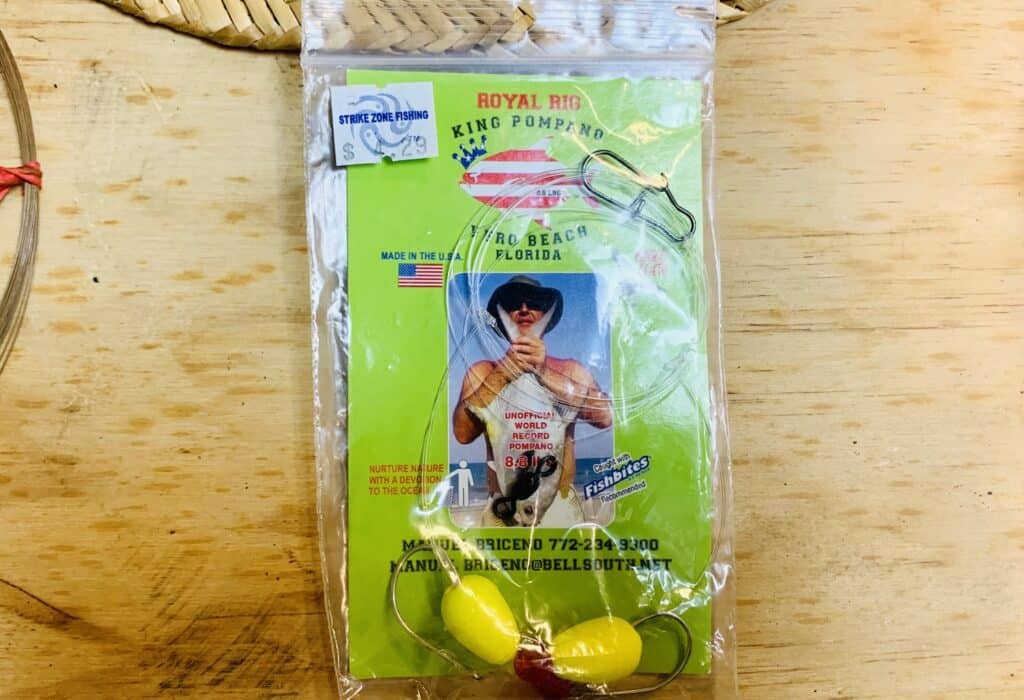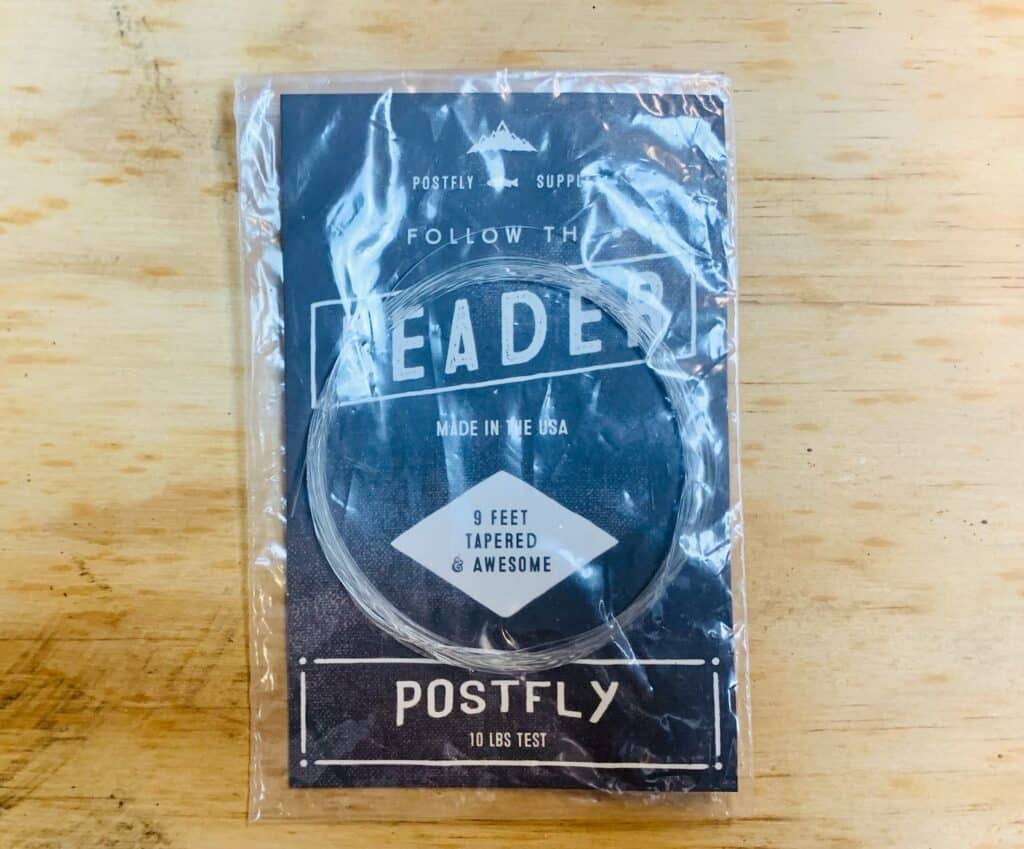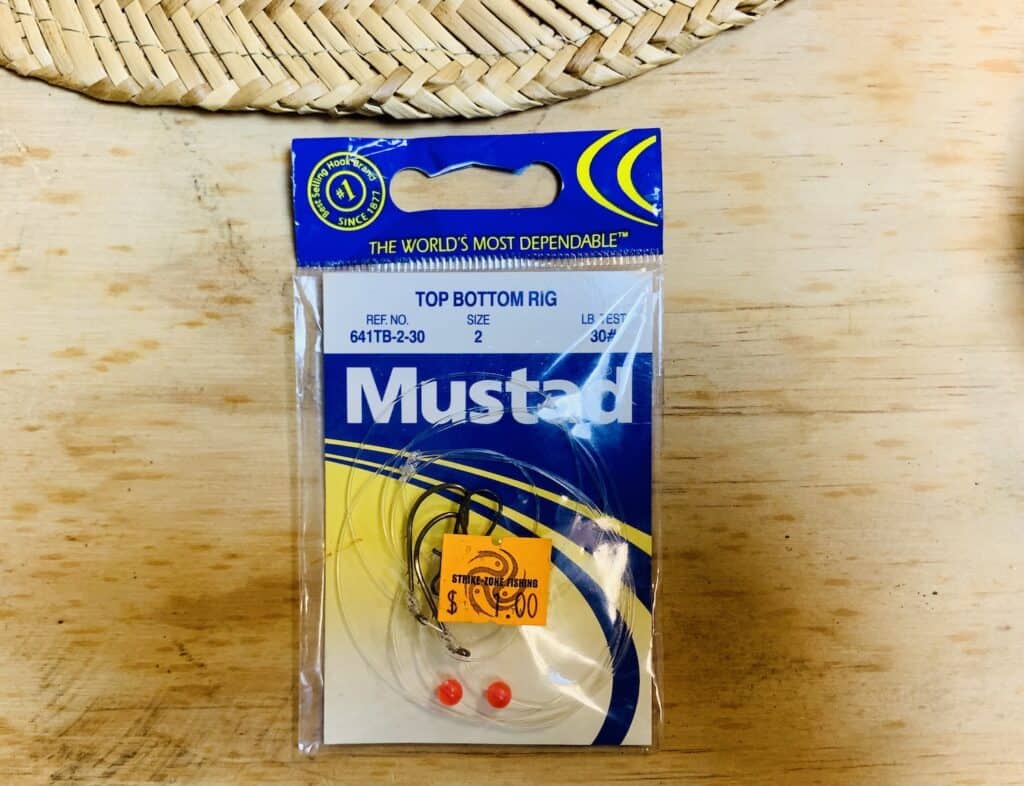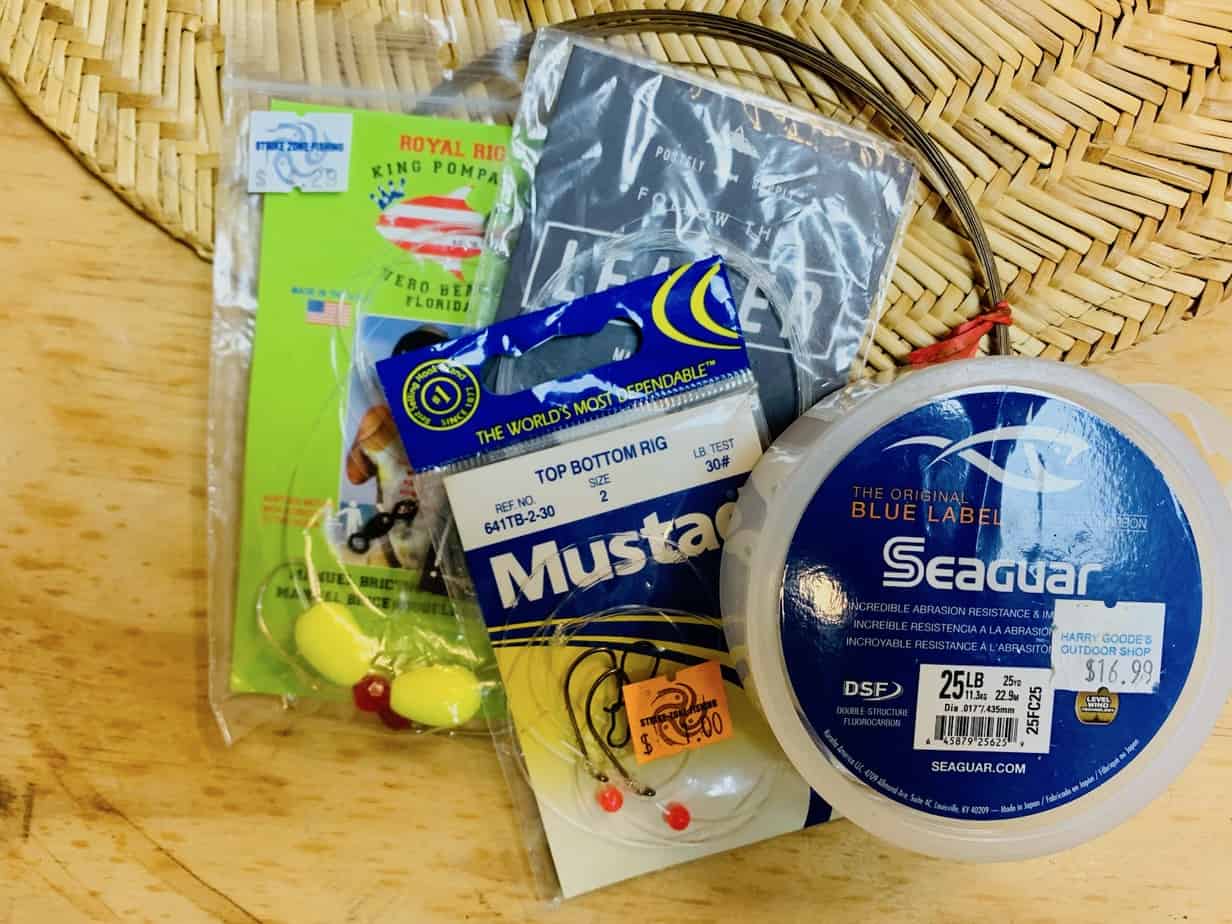You might be wondering, “What is a leader line, and why do I need it to fish?” No basic fishing setup is complete without a leader line. Leader lines are separate lengths of line attached to a main fishing line that offer protection to your main line and allows you additional flexibility with your bait presentation. Attaching a hook or lure directly to the main line can result in damage to your main line and more wasted line. A fishing leader line is a length of line that is attached, through a knot or swivel, to an angler’s main fishing line. The purpose of a leader line is two-fold:
- A leader line offers better bait presentation and
- A leader line protects your main line from breaking or being otherwise damaged.
Leader lines can range from several feet to a couple dozen feet long or more, depending on the type of fish you are targeting. Fishing leaders are generally made out of monofilament, fluorocarbon, or in some cases wire. You might wonder, “Can’t you just tie a hook to the end of your main line and be done?” Sure, you can. But you will risk breaking your main line, losing fish, and running into lots of frustration. Even a simple, beginner leader line setup can greatly improve the success of your fishing trip. Leader line can be purchased as regular line on a spool, or special leader setups on swivels can be purchased separately. In this article, we will cover details about different types of leader lines, when to use them, what a leader line setup should be based on application, and some of our favorite types of leader lines.
What type of fishing line should you use as leader line?
When it comes to leader line, there are traditionally three types of material that are used: monofilament, fluorocarbon, and wire or metal leaders. The right leader line can help reduce the visibility of your fishing line in the water and can also help you target fish at the top or bottom of the water column, depending on your leader’s characteristics. As we discuss in our How to Choose the Right Fishing Line article, monofilament or fluorocarbon are the lines of choice for leaders for most anglers. Both of these lines are single-strand lines, each with their own unique characteristics and behaviors. We explore some mono leader to braid mainline and fluoro leader to braid mainline setups below.
Fluorocarbon as a leader line
Fluorocarbon is newer to the market than monofilament fishing line and has risen in popularity in recent years. This line tends to be more expensive than monofilament, but for good reason. Because it is a compound material, it is incredibly strong and has a very high abrasion resistance. One of the biggest benefits to using fluoro as a leader is that it is nearly invisible in clear water, having a light refraction index similar to water. For fish that spook easily, fluorocarbon is the way to go. For more background on fluoro fishing line, and why we love it so much, check out our Complete Guide to Fluorocarbon Fishing Line. Why should you use fluoro as a leader line? Because it is
- Highly transparent
- High abrasion resistance
- Strong knots
- Sensitive
When to use fluoro as a leader line:
- In very clear water
- Targeting leader-shy fish

Monofilament as a leader line
Monofilament, or mono, offers many great features for your leader setup. Mono typically has a relatively high abrasion resistance, it can stretch substantially, and it’s very affordable. If it gets snagged on an underwater obstacle, you have a better chance of being able to extract your line without much trouble or losing the line. A monofilament leader gives you added flexibility in that you can choose different types of mono, including different colors, to benefit your bait presentation. Mono is more visible in the water than fluorocarbon.
Monofilament as a main line and leader line
Often, mono will be used as a main line—this does not mean that you do not need a leader. We always recommend using a leader to protect that main line. In some instances, you may want to use a mono-to-mono leader for its buoyancy. You can tweak the buoyancy of your line by using different size mono. Mono is typically a relatively buoyant line, and over time it will absorb water, but it still does not sink nearly as fast as fluorocarbon. This makes it a great leader for topwater fishing–using bait or lures designed to look like small insects or fish that live at the top of the water column. If you are looking for your bait to sink, then you will want to use fluoro as a leader. Want to deep dive on monofilament line? Check out our complete guide to mono fishing line. Why use mono as a leader line?
- Flexible
- Abrasion resistant
- Cheap and easily accessible
- Variety of colors
- Good knot strength
When to use mono as a leader line?
- In dark or murky water
- When you need good stretch and abrasion resistance

Wire or Metal Leader Line
In some instances, a wire or metal leader line can help you avoid cutoffs and reel in your catch, particularly if you are fishing for barracuda, sharks, or other large species. You will have many options here as far as the material, including stainless steel or titanium. Why use metal leader line?
- Incredibly durable
- Good for fighting large species
When to use metal as a leader line?
- Offshore fishing for large, saltwater species
Do you have to use leader line with braid?
We should note that braided fishing line, a multi-strand fishing line, is typically quite visible in the water and when it gets hung up on rocks or snagged in heavy cover, it can be difficult to break. In some cases, this leads to anglers cutting their line and leaving it behind presenting a hazard to fish and other marine life. In addition to that, it’s also costly to cut main braided line and braid is harsh on your hands, making it challenging to get a fish on board if you are not using any leader.
Can braid be used as leader line?
In general, we do not recommend using braided fishing line as leader, or even as a mainline without a leader. That really is not what it was made for. Braid’s smooth cast and the fact that it has little to no line memory make it an excellent and very reliable main line, but we recommend pairing it with a fluorocarbon or monofilament leader line.
Common Leader Line Setups
There are what feels like endless ways to set up a leader line. For most anglers, though, a simple leader setup will be just fine. Once you spool your main line, you can attach a leader using a knot or swivel, tie on a hook, prep your terminal bait presentation, and you’re on your way. Common setups start with a backing -> mainline -> leader line -> bait presentation. At each connection point, lines can be knotted together, with terminal tackle or bait presentations attached with swivels. In general, you want any knots you use to be slim, strong, and not too bulky.
Leader lines, line strength, knots, and swivels
Generally, any time you tie two lines together, you are creating a potential weak point in your overall line setup. This makes it critically important to use good knots that you’re well-versed in tying.
Best knots to attach leader line to mainline
- The uni-to-uni knot can be used to attach a hook to the end of your line, or to connect your main line and leader line. It’s a popular knot, has a high break strength, and is hard to go wrong with a uni-to-uni knot.
- The FG knot, a great knot to connect braided line to leader line, is another “must-know” knot.

Swivels
Swivels are small metal connectors that you can use to connect your leader line to your main line. They do exactly what it sounds like—they swivel so that when you are retrieving your catch, your line does not twist. This is particularly helpful when using a spoon or spinner lure, but in most other instances, swivels may not offer many benefits. Swivels certainly have their time and place, but in most instances you are better off just tying a line-to-line knot. If you do use a swivel, make sure to place it a good distance from your lure and if you’re using a wire or steel leader, a swivel is a must.
Choosing the Right Leader Line Length and Size
Fishing, like any other outdoor sport, leaves a lot of room for trial, error, and preference. There is no “one size fits all” leader length. Short leaders run anywhere from 12”-24”, medium leaders range from 24” to 30”, and a long leader would be anything longer than 30”. The shorter your leader line, the more nimble your line will behave in the water. Simply put, the length that the signal has to travel from your rod to the end of the line is shorter. We recommend starting with a medium length leader and then adjusting from there. Short leaders are good for:
- Fishing in heavy cover
- Power bait presentations
Medium Leaders perform well when:
- Casting
- Power fishing
- Bottom fishing
- Trolling
Long Leaders are good for:
- Trolling
- Live bait
- Fishing with more finesse
How to dispose of leader line?
Proper disposal of fishing line is very important to us here at Tight Lines and High Tides. When improperly disposed of, or left in the water or at the shoreline, discarded fishing line can wreak havoc on the local environment damaging delicate ecosystems and injuring wildlife. Fish, birds, and other marine life can ingest discarded fishing line, resulting in illness or even death. So, follow the principles of leave no trace and take everything you use back home with you. Fishing line generally cannot be thrown in the trash or recycling at your home; it requires special processing. Properly dispose of fishing line at designated recycling centers, which are becoming more common at popular fishing destinations. You can almost always bring used fishing line to your local bait and tackle shop for proper recycling. Learn more about how to dispose of fishing line here.
Leader Line Recommendations
Fluoro Leader Line:
- Daiwa J-Fluoro Fluorocarbon Leader 40lb strength and 50yd spool
- Seaguar Blue Label Fluorocarbon Leader line 30lb strength and 50yd spool
Mono Leader Line:
- SF Monofilament Leader Line Clear 30lb-400lb strength and 110yd spool
Metal Leader Line:
- Tackle Crafters Steel Leader
- American Fishing Wire Surflon Micro Supreme Nylon Coated 7×7 Stainless Steel Leader Wire
Success with Leader Lines
Even a small amount of leader line will completely change your fishing experience—for the better. Let us know how it goes by dropping us a line in the comments on our Tight Lines and High Tides YouTube channel.
Tight lines y'all!

